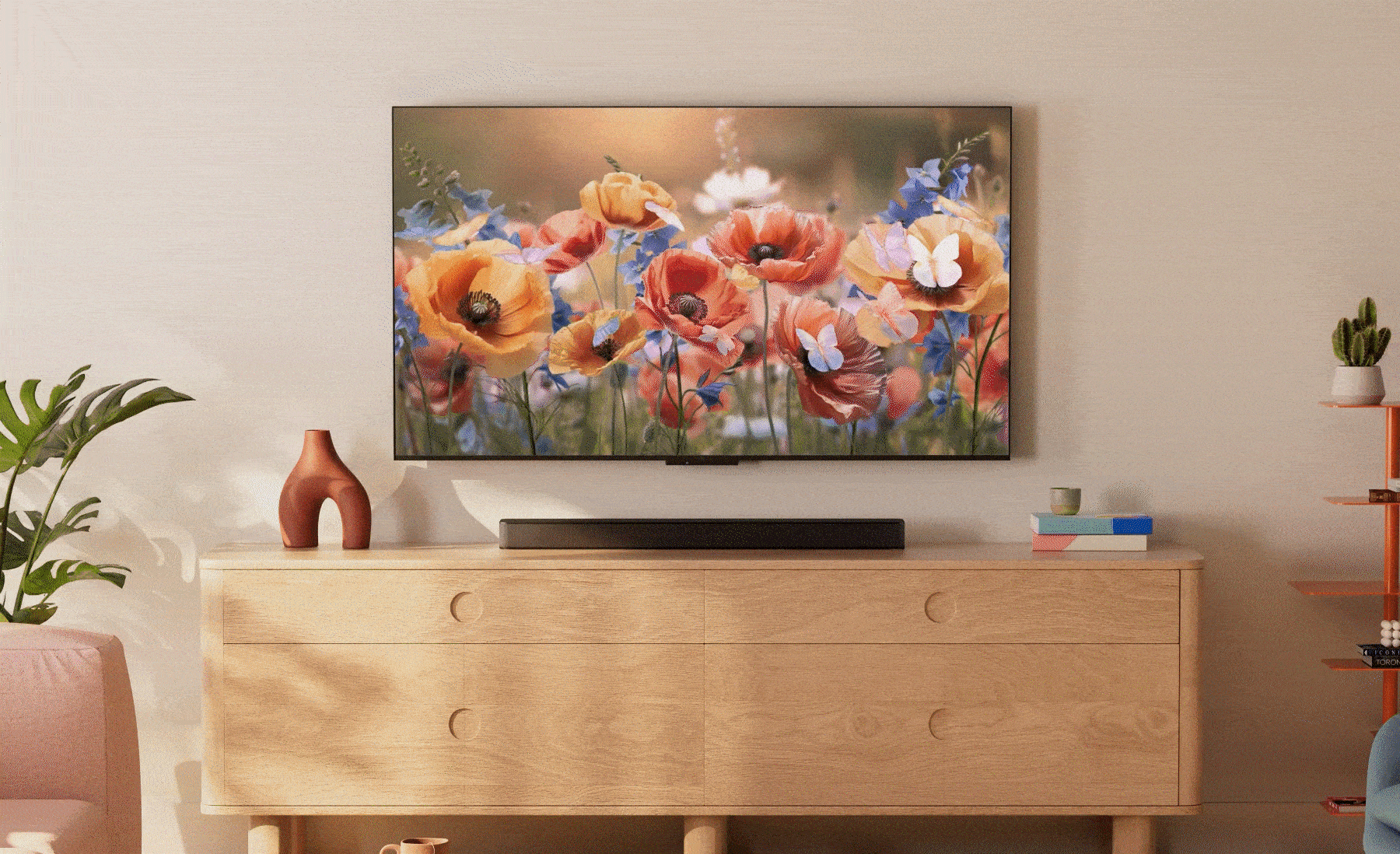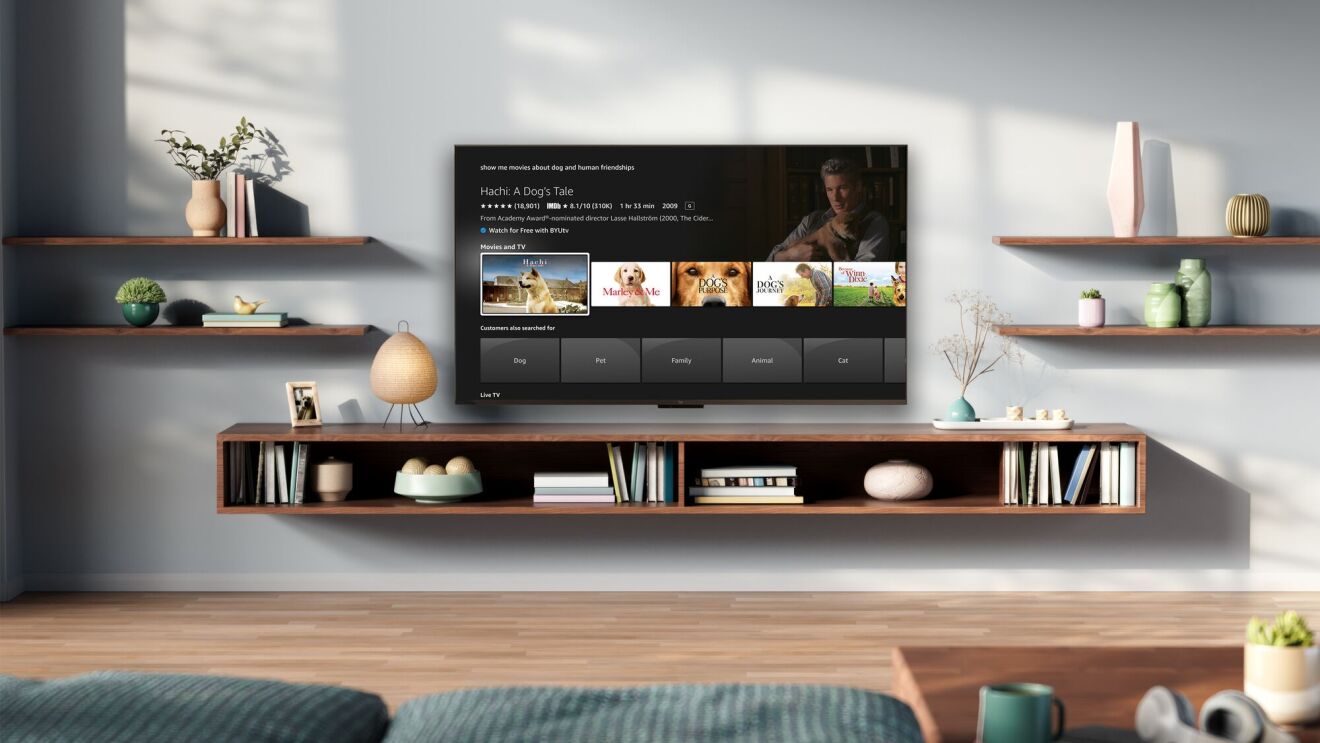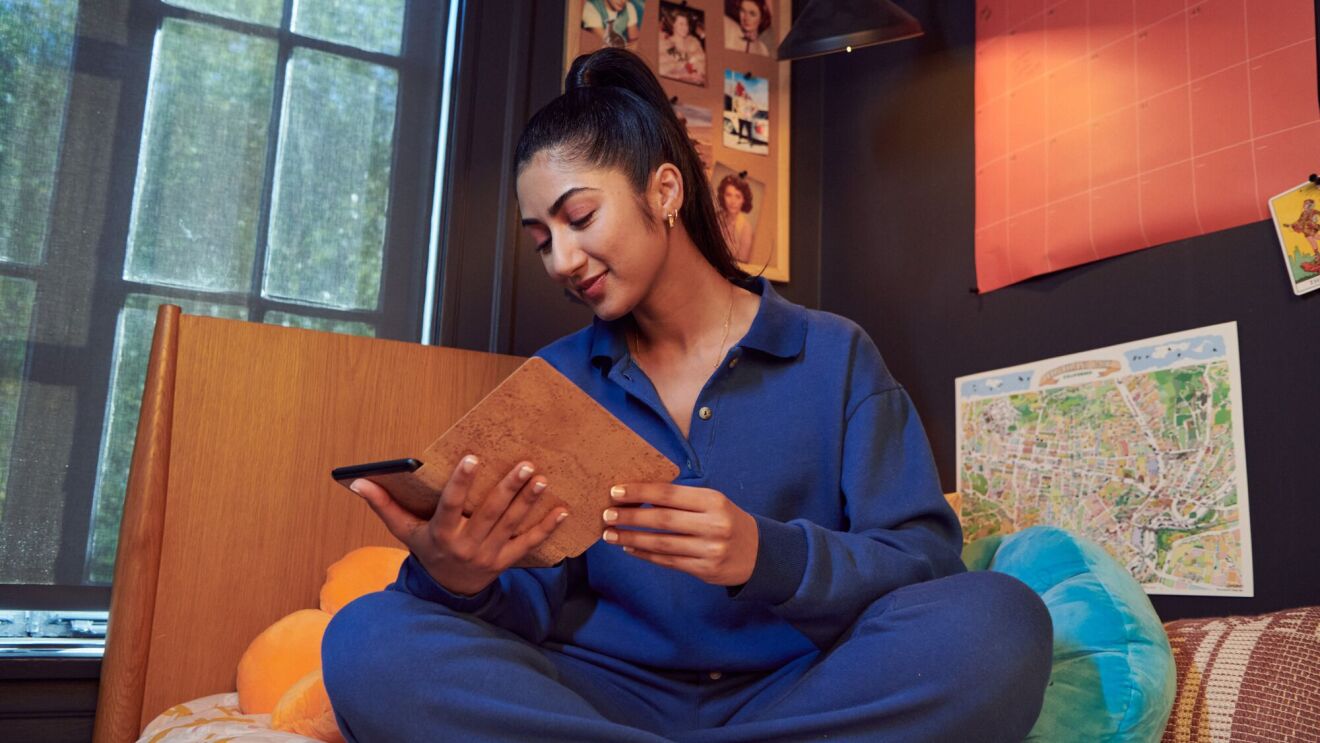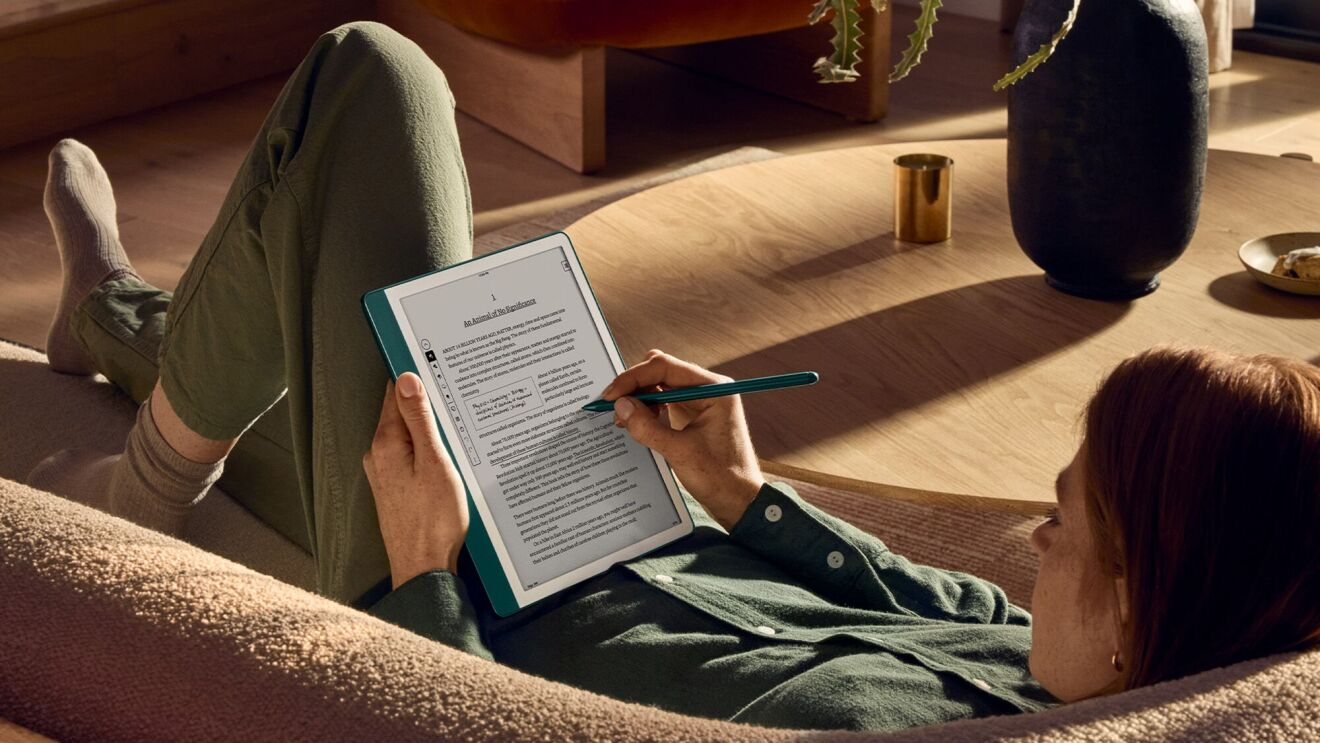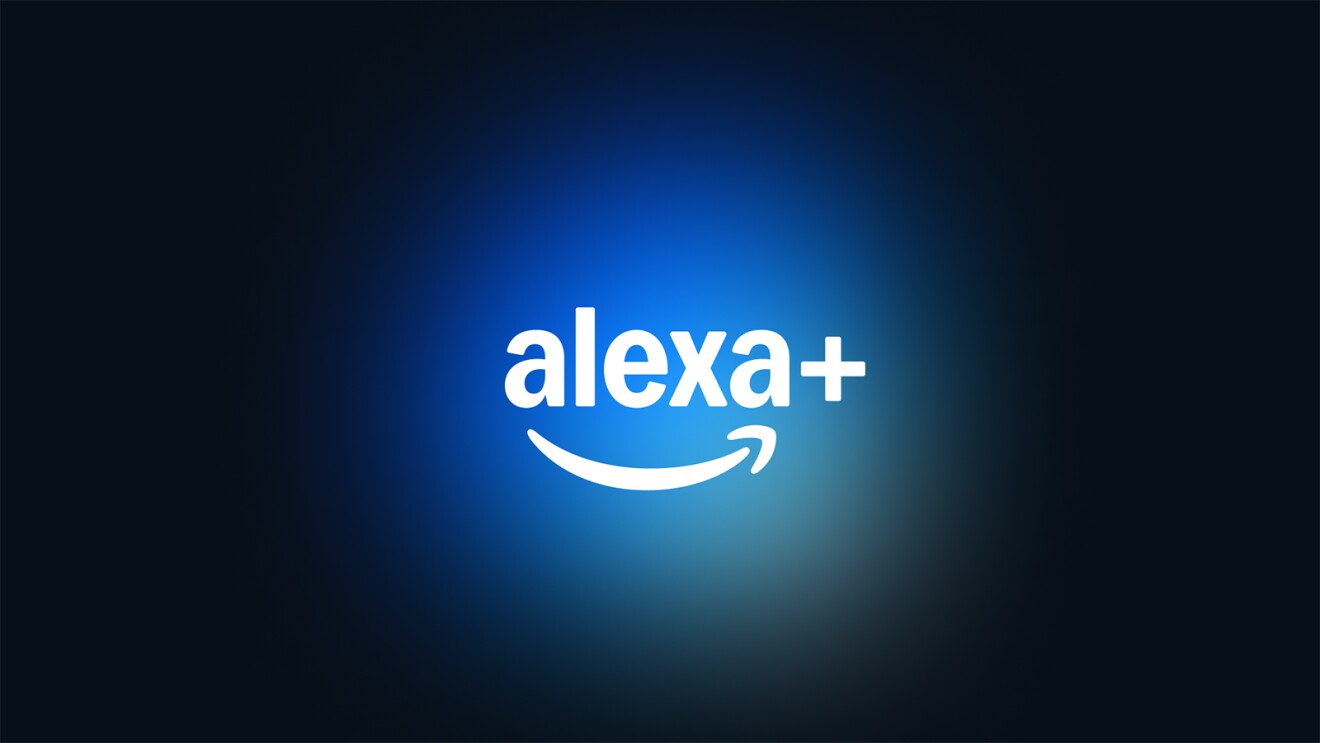Chris Turkstra spent a lot of time looking at TVs, and he didn’t like what he was seeing.
“Nobody would buy something big and blank and stick it on their wall,” said Turkstra, general manager for Fire TV Products at Amazon. “We've all just adapted to that. The value TVs give us when they're on is very high, so we forgive them for looking ugly when they're off.”
That’s why over the last year, Turkstra and his colleagues at Amazon made it their mission to erase this tradeoff. They worked to endow the TV with ambient intelligence, where technologies like digital systems, services, and devices like TVs can invisibly work together on our behalf—and even foresee our needs.
 Chris Turkstra, general manager for Fire TV Products at Amazon.
Chris Turkstra, general manager for Fire TV Products at Amazon.“Ideally, the product can fade into the background while also displaying something interesting when you do look at it,” said John Criswell, who lead Amazon’s effort to bring ambient intelligence to the TV.
The result of their work will soon be available for anyone to enjoy: the Fire TV Omni QLED Series television family. “We’ve been buying so-called smart TVs for decades, but they’re really not all that smart,” said Daniel Rausch, vice president of Amazon Entertainment Devices and Services. “The Fire TV Omni QLED series reimagines what customers can expect from a smart TV.”
Announced at Amazon’s Devices and Services Fall Launch event in late September, the new Fire TV has a deep integration with voice—so you can easily interact with your TV using only your voice. A new feature called Adaptive Brightness enables the TV to understand the lighting in the room and intelligently adjust the picture brightness to the surroundings. And a pair of sensors works with Alexa, Amazon’s voice artificial intelligence (AI), to transform the TV from an inert blank box into an intelligent and interactive canvas that can display photos and art.
Unlike other TVs, the new Fire TV includes gallery-quality art and ships with more than 1,500 free landscapes, motion visuals, impressionist pieces, and photography curated from museums and artists around the world. It’s all part of the new Fire TV Ambient Experience, which completely transforms the largest screen in your home into something that’s both useful and beautiful.
“You can ask Alexa a number of questions about the artwork you see in the Ambient Experience, like, ‘Tell me more about this photo’ or ‘Who painted this?’” Rausch said. “In my house, we’ve learned a lot about the impressionist pieces from The National Gallery of Art in Washington, D.C.”
The TV can also play music and provide access to widgets, which provide timely information to users and help them navigate their day. Dan Tuckman, who leads the product marketing for Amazon-built Fire TVs, said the picture quality alone makes the Fire TV Omni QLED Series an amazing place to watch his favorite football team. “Now with Ambient Experience, the TV can provide glanceable information when I need it to, and it’s beautiful in my home,” he said.
As for the image and sound, the new Fire TV—there are 65” and 75” versions—is loaded with the latest picture-quality technology. It comes with a 4K quantum dot LED display that shows bright, vivid colors with local dimming that enables deeper darks and brighter whites. The display also has the latest advancements in high-dynamic range technology. It supports streaming content in the latest HDR formats, like Dolby Vision IQ and HDR10+, so that customers can enjoy a movie theater-like experience at home. Where customers can enjoy more than 1 million TV episodes and movies available on Fire TV in the U.S., including the new series The Lord of the Rings: The Rings of Power and Thursday Night Football on Prime Video. It’s “a television for people who want a cinematic TV experience,” Turkstra said.
Elevating the baseline

The journey to the ambient TV started like many other projects at Amazon: listening to the customer and then working backwards from their insights. “The majority of TV buyers believe their televisions have room to be more innovative and smarter,” said David Meckstroth, head of Go-To-Market for Fire TV. “It's not like we're changing everything about the TV, but with the Ambient Experience, we're trying to expand the definition of what a TV can be and do.”
Meckstroth said Amazon has “a lot of smarts” around the artificial intelligence that teams could use when developing the TV, from content to optimizing pictures, video quality, and audio. “I think we have a lot to give that will elevate the baseline of what a TV does and what people's expectations are. That's something that's really exciting,” he said.
Now you see me, now you don’t
Arlen Dean, a senior software manager who started working on the new Fire TV Omni QLED Series last year, said that “the big picture goal is to push the envelope.” He said the project has been a highly collaborative effort involving numerous teams, including hardware and software design, Amazon photo products, and Alexa. “We’ve pulled together quite a cross-functional group to build this,” he said.
Tuckman, the product marketing lead, said that incorporating tools like Amazon Photos, Alexa-powered widgets, Amazon Music, and Smart Home controls involved many long days and hard choices. “It’s about trying to find the right balance, so that the content adds to the experience in the room without being distracting,” he said.
As they looked for the sweet spot between engagement and distraction, the team quickly realized that creating a solution that worked for everyone was going to be tough. “Generally, our approach has been figuring out how to build the right options so that people can customize the experience to work the way they want it to,” Dean said.
For that reason, the team endowed the new TV lineup with a range of adjustable features. Customers can change how often the screen art or photography shifts, choose between a number of unique widget layouts, and mute the microphone—even though that’s something Criswell definitely won’t be doing.
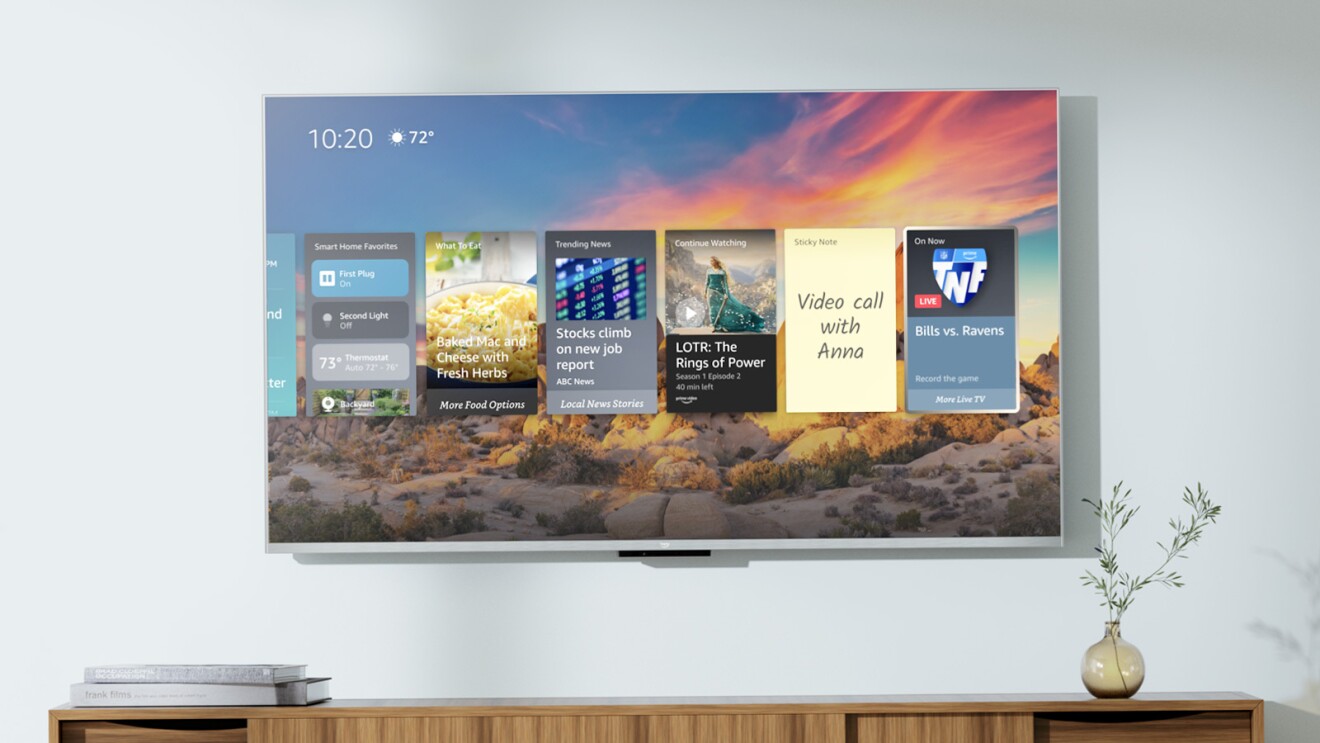
“One of the things I’ve loved about working on this project is that my wife enjoys using voice to interface with the TV. She’s not a techie, she’s a typical customer, and from the moment I joined the team and brought the Fire TV Omni QLED Series home, voice was the first way she interacted with it,” Criswell said.
Investing in the future
Criswell’s experience is an anecdotal but nonetheless significant signal for Turkstra, who said that including the far-field microphone to control the TV, and the sensors that initiate the Ambient Experience, was a significant bet.
“We sweat over every dollar, so these are really investments in our future,” he said. “The whole goal is to make it so that in a few years people are saying, ‘What do you mean you can’t talk to your TV?’ or ‘What do you mean your TV doesn’t come with thousands of pieces of art for free?’
“We want to shift the baseline of what people expect from their televisions, because frankly, I think there’s a lot of things that we can do as a company that make the customer experience even better.”
To learn more about the Fire TV and our newest devices and services, check out everything we announced at the fall launch event.
Trending news and stories



